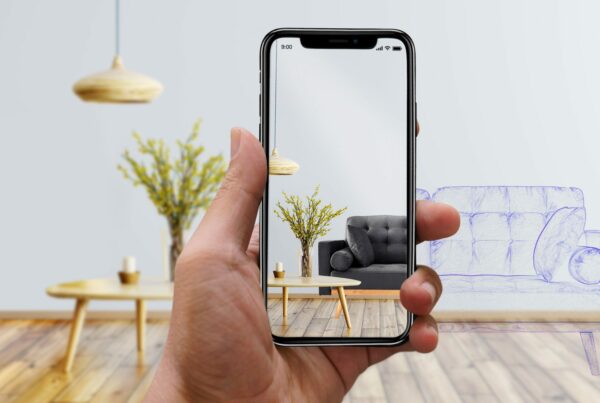Visualization technologies, including Augmented Reality (AR), Virtual Reality (VR), and 3D modeling, are fundamentally reshaping the future of e-commerce. These innovative tools allow customers to interact with products in ways that were previously unimaginable, making online shopping more immersive and personalized. With the ongoing shift towards digital shopping, these technologies provide a bridge between physical and virtual experiences, enabling consumers to interact with products before making a purchase.
The growing role of visualization in e-commerce
The demand for more interactive and immersive shopping experiences has spurred the adoption of visualization technologies across industries. For instance, AR allows consumers to place virtual products—such as furniture, home décor, or appliances—into their homes to see how they would fit and look in real life. 3D modeling, meanwhile, enables shoppers to customize products in real-time, from selecting colors and materials to adjusting dimensions, offering a unique and engaging shopping journey.
 This shift is driven by consumers’ need for greater confidence in their online purchases. By interacting with products virtually, customers can better understand how a product will fit into their lives, leading to more informed decisions. Virtual Reality (VR) further enhances this experience by allowing users to immerse themselves in a fully virtual environment where they can explore a store, browse products, and simulate in-person shopping.
This shift is driven by consumers’ need for greater confidence in their online purchases. By interacting with products virtually, customers can better understand how a product will fit into their lives, leading to more informed decisions. Virtual Reality (VR) further enhances this experience by allowing users to immerse themselves in a fully virtual environment where they can explore a store, browse products, and simulate in-person shopping.
Key benefits of visualization technologies:
- Personalization: 3D models and configurators offer extensive customization options, allowing users to tailor products to their preferences.
- Reduced Returns: AR and 3D models provide a clearer understanding of products, reducing the chances of disappointment after a purchase.
- Higher Conversion Rates: Immersive experiences increase customer engagement and trust, leading to faster and more confident buying decisions.
AR and VR: Bridging physical and digital worlds
The integration of AR and VR into e-commerce has been one of the most transformative developments in the sector. By blurring the lines between physical and digital shopping experiences, these technologies have revolutionized how customers engage with products.
AR in e-commerce: visualizing products in real spaces
AR is particularly valuable because it allows customers to visualize products in their own environments. For example, a customer shopping for a sofa can use their smartphone to project a digital version of the furniture into their living room. This technology not only helps with visualization but also ensures the product fits perfectly in terms of size and style.
AR is being used across various industries, from fashion and beauty to home improvement. In the fashion sector, AR allows consumers to virtually try on clothing and accessories, eliminating uncertainty about sizing and appearance. In home improvement, AR enables users to plan layouts for new furniture or renovations, improving decision-making accuracy.
Key AR features in e-commerce:
- Virtual Try-ons: Customers can virtually try on clothes, accessories, or makeup.
- Product Placement: AR allows for accurate placement of furniture, home décor, or appliances in real-world spaces.
- Customization: Interactive AR features allow customers to modify products in real time, seeing how changes impact the final result.
 VR in e-commerce: creating immersive shopping experiences
VR in e-commerce: creating immersive shopping experiences
Virtual Reality offers a fully immersive experience where users can explore virtual storefronts or interact with 3D-rendered products. VR enables businesses to create entire virtual shopping environments, replicating the in-store experience online. This technology is particularly effective for high-value purchases, such as luxury goods or automotive sales, where customers expect a more tactile and personal experience.
By using VR, businesses can recreate physical retail spaces in a digital format, allowing customers to browse virtual aisles, interact with products, and receive personalized shopping assistance. This immersive environment helps bridge the gap between traditional brick-and-mortar stores and online platforms, providing customers with the best of both worlds.
Advantages of VR in e-commerce:
- Immersive Shopping: VR allows customers to explore virtual stores or showrooms, replicating the in-store experience.
- Product Exploration: Users can interact with 3D models, zoom in on details, and rotate products to view them from all angles.
- Brand Differentiation: Offering VR shopping experiences helps brands stand out and attract tech-savvy consumers.
 How visualization technologies drive customer engagement
How visualization technologies drive customer engagement
At the core of AR, VR, and 3D modeling is the ability to engage customers in ways that static images or traditional product descriptions cannot. These technologies empower customers to take control of their shopping experience by providing interactivity and personalization, which in turn leads to increased customer satisfaction and loyalty.
Enhanced personalization through 3D modeling
3D modeling plays a crucial role in enabling personalization in e-commerce. Customers can modify products to suit their preferences, whether it’s adjusting the color of a jacket or selecting custom features for a piece of furniture. This level of control fosters a deeper connection between the customer and the product, enhancing the overall shopping experience.
Personalized shopping is not only a growing trend but also a necessity in today’s competitive e-commerce landscape. By allowing customers to customize their purchases with ease, businesses can cater to a wider range of tastes and preferences, increasing the likelihood of conversion.
Impact on business operations and revenue
The integration of visualization technologies in e-commerce is not just about enhancing customer experience—it also has a direct impact on business operations and revenue growth. As these technologies become more accessible, businesses are finding that they streamline the entire sales funnel. By providing customers with real-time visualization tools, businesses can address common customer pain points, such as uncertainty about product fit or appearance, earlier in the shopping journey.
Additionally, returns—a major challenge for online retailers—can be significantly reduced by providing customers with accurate representations of products through AR and 3D models. When customers know exactly what to expect, they are less likely to return items due to dissatisfaction, saving businesses on logistics and operational costs.
Boosting revenue through immersive shopping
Visualization technologies contribute to higher conversion rates and larger average order values. Customers who can fully customize their purchases or interact with products in a virtual environment are more likely to make confident purchasing decisions, which in turn increases sales. Furthermore, these technologies often justify premium pricing by offering an enhanced shopping experience that traditional e-commerce platforms cannot.
 Challenges and opportunities ahead
Challenges and opportunities ahead
While the benefits of AR, VR, and 3D modeling in e-commerce are clear, businesses must also address several challenges in adopting these technologies. One of the main obstacles is the cost of implementation, particularly for smaller businesses. However, as the technology becomes more widespread, the barriers to entry are lowering, making these tools more accessible to a broader range of companies.
Additionally, there is a growing need for consumer education. While many shoppers are familiar with AR through mobile apps and social media, VR and 3D modeling still require more user adoption. Ensuring that customers understand how to use these tools effectively will be key to their success.
Opportunities for innovation
The future holds immense opportunities for businesses willing to invest in visualization technologies. With continuous advancements in AI and machine learning, the potential for even more personalized shopping experiences is within reach. AI-driven virtual assistants could further enhance the e-commerce journey, guiding customers through their interactions with AR and 3D tools, making the shopping experience smoother and more intuitive.
Recap
The future of e-commerce is bright, with visualization technologies like AR, VR, and 3D modeling leading the way in transforming how consumers interact with products online. These tools not only enhance customer engagement but also drive business growth by improving conversion rates, reducing returns, and fostering brand loyalty.
For businesses, investing in these technologies is no longer just an option—it’s essential for staying competitive in a rapidly evolving market. By embracing immersive, interactive shopping experiences, e-commerce brands can offer customers the confidence and personalization they seek, ultimately driving both satisfaction and sales growth in the digital age.






